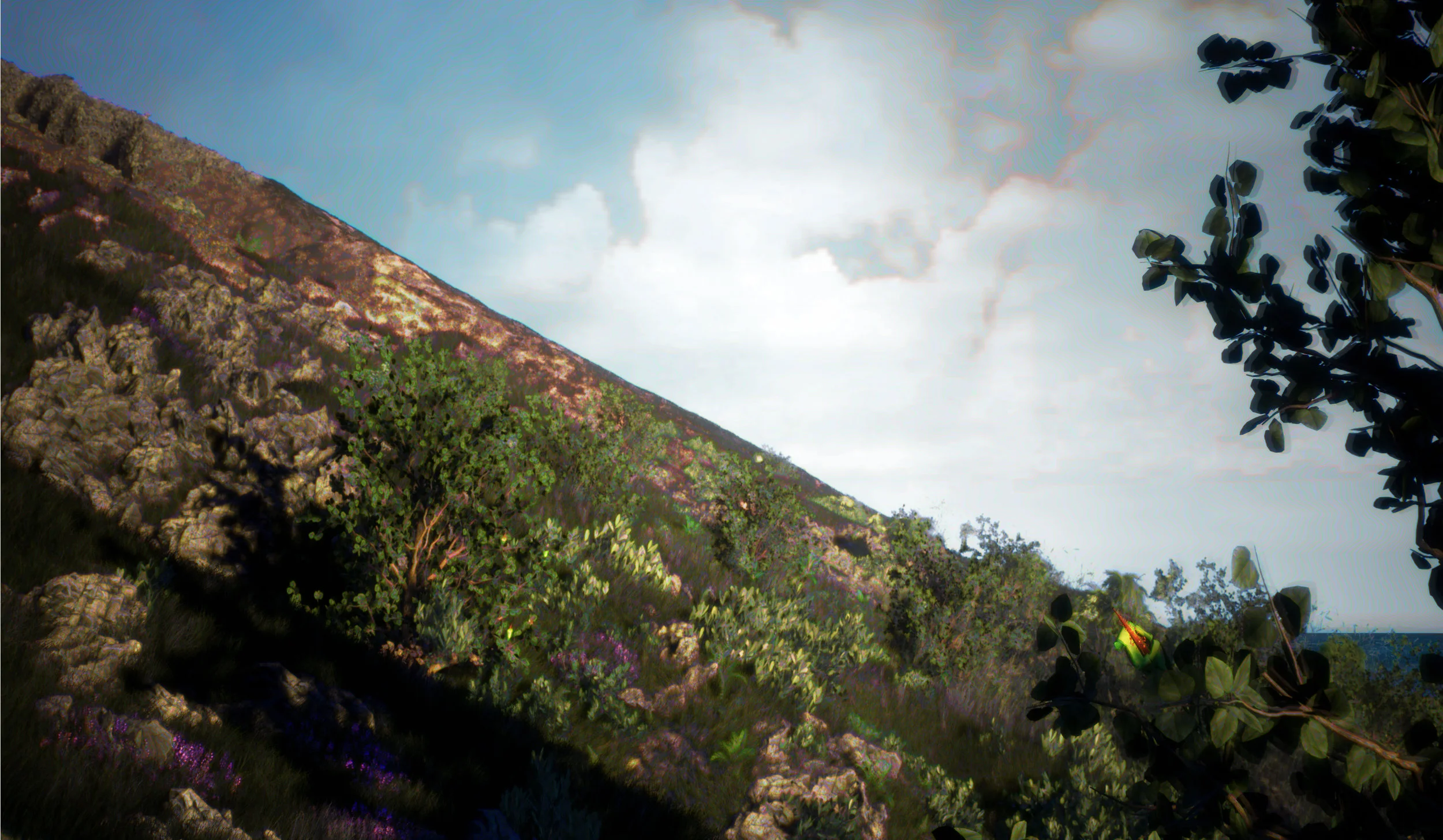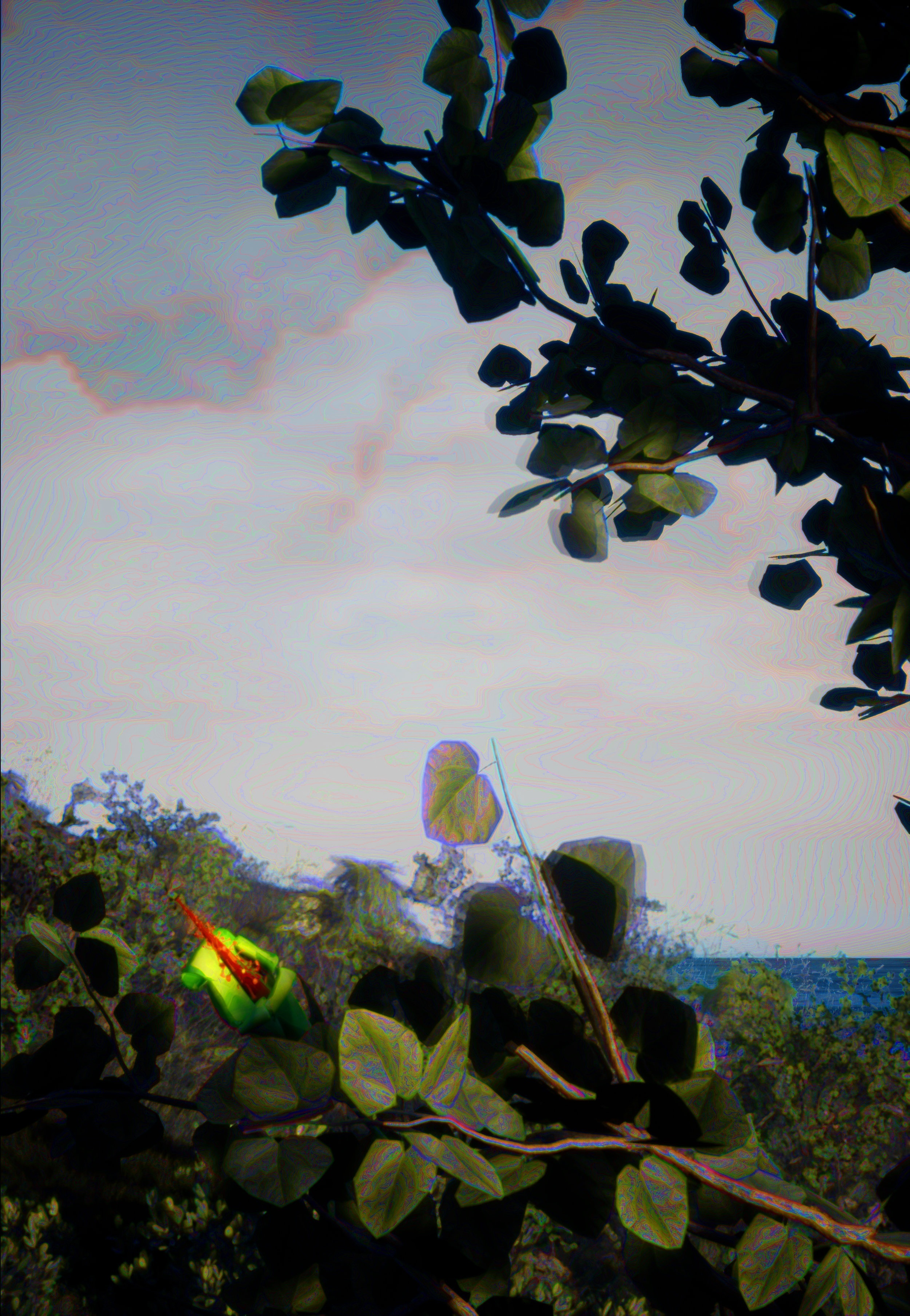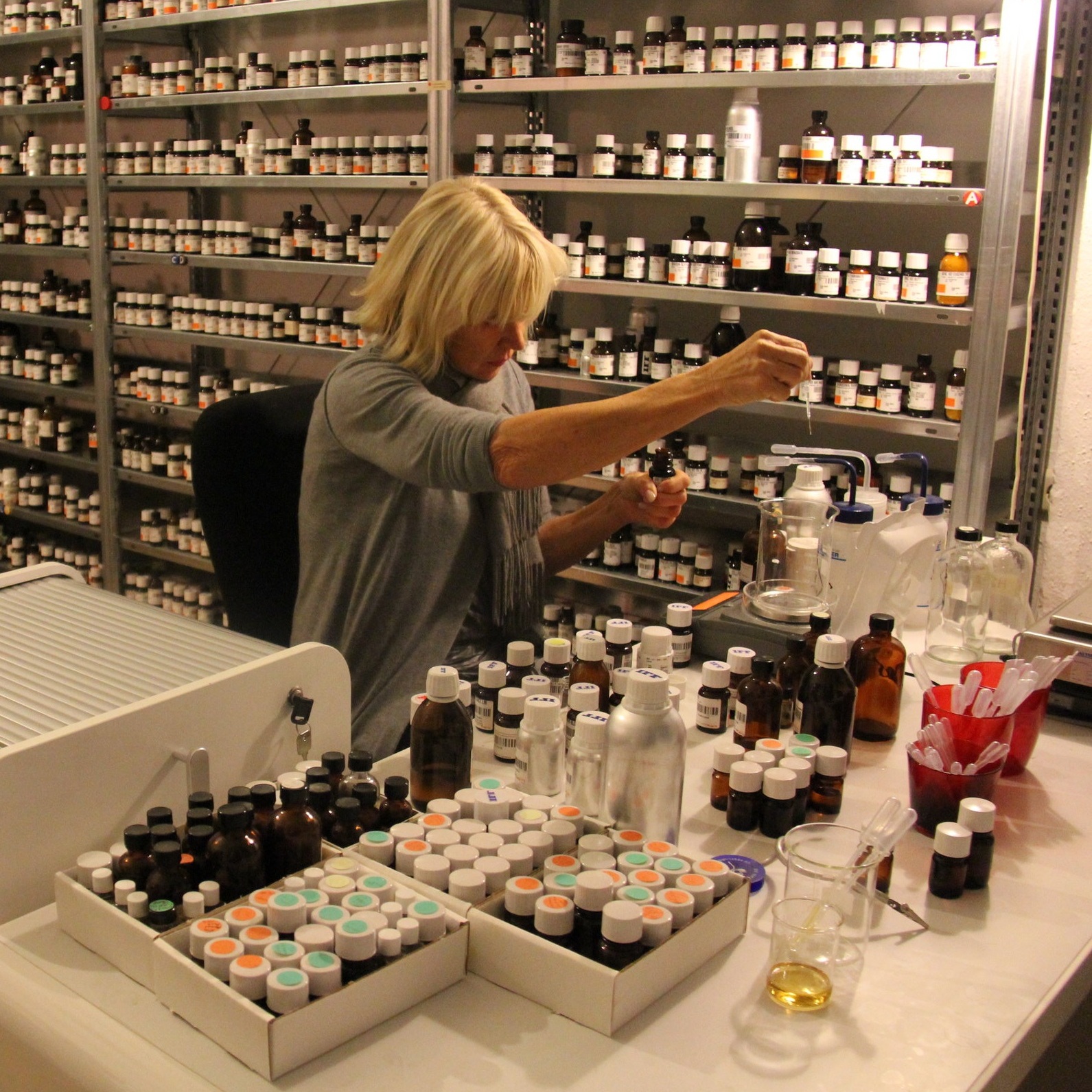ABOUT
RESURRECTING THE SUBLIME is a new collaborative work bringing together cutting-edge scientific research and immersive installations, by Alexandra Daisy Ginsberg, Sissel Tolaas, and a team of synthetic biologists at Ginkgo Bioworks led by Christina Agapakis, with the support of IFF Inc.
Could we ever again smell flowers driven to extinction by humans? This question motivates Resurrecting the Sublime, an ongoing collaboration between artist Dr. Alexandra Daisy Ginsberg, smell researcher and artist Sissel Tolaas, and an interdisciplinary team of researchers and engineers from the biotechnology company Ginkgo Bioworks, led by Creative Director Dr. Christina Agapakis, with the support of IFF Inc. In a series of immersive installations, the first in the exhibition La Fabrique du Vivant at the Centre Pompidou in Paris (opening 18 February 2019), the project allows us to smell extinct flowers, lost due to colonial activity.
Using tiny amounts of DNA extracted from specimens of three flowers stored at Harvard University’s Herbaria, the Ginkgo team used synthetic biology to predict and resynthesize gene sequences that might encode for fragrance-producing enzymes. Using Ginkgo’s findings, Sissel Tolaas used her expertise to reconstruct the flowers’ smells in her lab, using identical or comparative smell molecules.
The Hibiscadelphus wilderianus Rock, or Maui hau kuahiwi in Hawaiian, was indigenous to ancient lava fields on the southern slopes of Mount Haleakalā, on Maui, Hawaii. Its forest habitat was decimated by colonial cattle ranching, and the final tree was found dying in 1912. The Orbexilum stipulatum, or Falls-of-the-Ohio Scurfpea, was last seen in 1881 on Rock Island in the Ohio River, near Louisville, Kentucky, before US Dam No. 41 finally flooded its habitat in the 1920s. The ‘Leucadendron grandiflorum (Salisb.) R. Br.’, the Wynberg Conebush has a more complex story, which we are still uncovering. It was last described in London in a collector’s garden in 1805; its habitat on Wynberg Hill, in the shadow of Table Mountain, Cape Town, South Africa, was already lost to colonial vineyards. This flower may prove to be completely lost: the project is bringing to light that specimens around the world may historically have been incorrectly identified.
While we can use technology to reach back into the past and learn which smell molecules the flowers may have produced, the amounts of each are also lost. In installations designed by Alexandra Daisy Ginsberg, fragments of each flower’s smell diffuse and mix, introducing contingency: there is no exact smell. The lost landscape is reduced to its geology and the flower’s smell: the human connects the two, and in contrast to a natural history museum, the human becomes the specimen on view.
Using genetic engineering to resurrect the smell of extinct flowers—so that humans may again experience something we have destroyed—is awesome and perhaps terrifying. This dizzying feeling evokes the sublime, an “expression of the unknowable”, an aesthetic state encouraging contemplation of humans’ position amidst the immensity of nature.
This is not de-extinction. Instead, biotechnology, smell, and reconstructed landscapes allow us to once again experience a flower blooming on a forested volcanic slope, in the shadow of a mountain, or on a wild river bank, revealing the interplay of species and places that no longer exist. Resurrecting the Sublime asks us to contemplate our actions, and potentially change them for the future.
Digital reconstruction of the extinct Hibiscadelphus wilderianus Rock, on the southern slopes of Mount Haleakala, Maui, Hawaii, around the time of its last sighting in 1912. Credit: Christina Agapakis, Alexandra Daisy Ginsberg, Sissel Tolaas, with support from IFF Inc. and Ginkgo Bioworks, Inc. © Alexandra Daisy Ginsberg.
Dried specimen of Hibiscadelphus wilderianus Rock, collected by Gerrit P. Wilder on Maui Island, Hawaii in 1910. Courtesy Gray Herbarium of Harvard University.
Digital reconstruction of the extinct Hibiscadelphus wilderianus Rock, on the southern slopes of Mount Haleakala, Maui, Hawaii, around 1912. Credit: Christina Agapakis, Alexandra Daisy Ginsberg, Sissel Tolaas, with support from IFF Inc. and Ginkgo Bioworks, Inc. © Alexandra Daisy Ginsberg.
CREDITS
Ginkgo Bioworks is a synthetic biology company based in Boston, USA. Using the most advanced technology on the planet—biology—Ginkgo grows new products for health and medicine, food and agriculture, and everyday consumer products like flavors and fragrances. Project Team: Dr Christina Agapakis, Natsai Audrey Chieza, Grace Chuang, Jason Kakoyiannis, Dr Jason Kelly, Scott Marr, Krishna Patel, Kit McDonnell, Dr Christian Ridley, Dr Dayal Saran, Atsede Siba, Dr Dawn Thompson, Dr Jue Wang
DR. CHRISTINA AGAPAKIS
Dr. Christina Agapakis is a synthetic biologist, artist, and writer who has been involved in the synthetic biology community for over a decade. She is Creative Director of Ginkgo Bioworks, a synthetic biology company based in Boston designing made-to-order microbes for applications in industrial technology, agriculture, food, and health. Her work focuses on the design and communication of future biotechnologies, enabling new kinds of human-microbial collaborations. During her PhD at Harvard, she worked on producing hydrogen fuel in bacteria and making photosynthetic animals. She has taught designers at the Art Center College of Design and biomolecular engineers at UCLA, and she once made cheese using bacteria from the human body.
DR. ALEXANDRA DAISY GINSBERG
Dr. Alexandra Daisy Ginsberg is an artist working across disciplines and media to explore the human values that shape design, science, technology, and nature. She has spent ten years researching synthetic biology and the design of living matter, pushing the boundaries of design and science with leading scientists, engineers, artists, designers, social scientists, and museums around the world. Daisy is lead author of “Synthetic Aesthetics: Investigating Synthetic Biology’s Designs on Nature” (MIT Press, 2014), and in 2017 completed “Better”, her PhD by practice at London’s Royal College of Art, interrogating how powerful dreams of “better” futures shape designed things. Daisy received the World Technology Award for design in 2011, and the London Design Medal for Emerging Talent in 2012. Her work has twice been nominated for Designs of the Year (2011, 2015). Daisy publishes, lectures, and exhibits internationally, including at MoMA New York, the Museum of Contemporary Art, Tokyo, and the National Museum of China, and her work is in museum and private collections.
SISSEL TOLAAS
Sissel Tolaas has been working, researching, and experimenting intensively with the topic of smell since 1990. Sissel is a pioneer and unique in her approach to smells and has developed a wide range of revolutionary projects worldwide with smells based upon her own knowledge: organic chemistry, linguistics, and visual art. Sissel established the SMELL RE_searchLab Berlin in January 2004, supported by IFF Inc. Her research and projects have won recognition through numerous national and international scholarships, honors, and prizes. She collaborates intensively with other disciplines. Sissel has shown her projects in multiple institutions, including MOMA, NGV, DIA, CCA, and worked with universities including Nanyang Technical University, Harvard, and Oxford. She has done 52 City SmellScape research projects since 1996, of, for, and with major cities, around the world. She has built up several types of smell archives and is working on smell molecule preservation and conservation archives on The World’s Oceans, Decay in Detroit, Lascaux Cave, and Australia’s Indigenous past. Since 2014, Tolaas has been part of various start-ups in senses and technology.
SUPPORTED BY
IFF Inc.
WITH SPECIAL THANKS TO
Dr Michaela Schmull, Harvard University Herbaria, Cambridge
THE FLOWERS
Hibiscadelphus wilderianus, coll. J. F. Rock s.n. from e [east] Maui, Hawaii.
The Herbarium of the Arnold Arboretum of Harvard University
‘Leucadendron grandiflorum (Salisb.) R. Br.’, coll. F.G. Meyer and T. R. Dudley s.n., Aug. 15- 20, 1966.
The Herbarium of the Arnold Arboretum of Harvard University
Orbexilum stipulatum, coll. C. W. Short, Kentucky and Bot. Garden 1871.
Gray Herbarium of Harvard University
PALEOGENOMICS
Dr Joshua Kapp and Dr Beth Shapiro, Paleogenomics Lab, University of California, Santa Cruz
DNA SYNTHESIS
Twist Bioscience
ALEXANDRA DAISY GINSBERG
Dr Alexandra Daisy Ginsberg, Ana Maria Nicolaescu (3D artist), Johanna Just, Ness Lafoy, Ioana Mann, Stacie Woolsey, Nicholas Zembashi
FILM EDITING
Inferstudio
SOUND DESIGN
Sam Conran
FABRICATION
Factory Settings (diffusion hoods). Somobi, Vitrerie Stephanoise (Saint-Étienne vitrines).
SMELL DIFFUSION TECHNOLOGY
Scentcommunication
WITH THANKS FOR ADDITIONAL PLANT RESEARCH TO
Dr Nicholas Hind, Dr Gerhard Prenner, Harry Smith, The Herbarium, Royal Botanic Gardens, Kew; Dr Anthony Roberts, Changing Lives Through Nature, Cape Town; Dr Tony Rebelo, SANBI, Cape Town
© 2020 Christina Agapakis, Alexandra Daisy Ginsberg, Sissel Tolaas, Ginkgo Bioworks, Inc.





